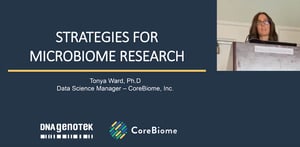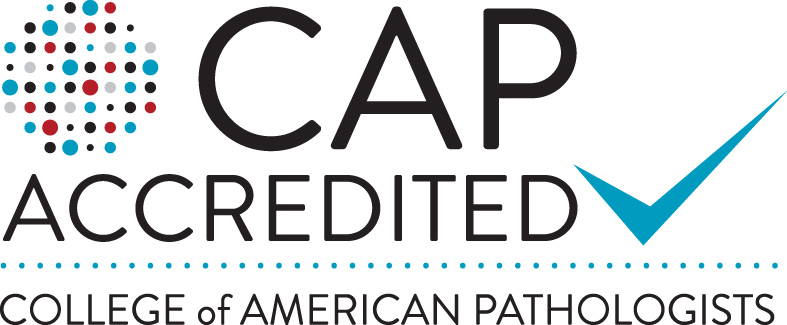Strategies in microbiome sequencing
By Shanda Giacomoni on Jan 16, 2020 1:15:00 PM
Choosing the best sequencing platform for your research

There are many ways to profile a microbiome: Amplicon (16S) sequencing, shallow shotgun or deep shotgun. Each platform has its own strengths and limitations that can influence your study design. Dr. Tonya Ward, CoreBiome’s Data Science Manager, discussed study design for microbiome research at the Microbiome R&D and Business Collaboration Forum in October 2019:
UPDATE: On May 12, 2020, CoreBiome rebranded as Diversigen Inc.
3 things to consider to optimize your microbiome data output
Dr. Ward discussed optimizing data output based on three major considerations:
1. Sample type – Do you have high biomass? Do you have low host DNA?
2. Hypotheses – What are your research questions? Focusing on this can help you determine what information you need. For example, do you need functional or taxonomic information?
3. Budget – How much can you spend? You have to work within your budget to get the information you need for your study.
Dr. Ward compared CoreBiome’s BenchMark, BoosterShot and DeepSeq services and applied the above three considerations to each:
BenchMark | BoosterShot | DeepSeq | |
What it does | Amplifies and sequences a small region of a microbial genome | Fragments and sequences all DNA in a sample, at depths of 2-4 million reads | Fragments and sequences all DNA in a sample, at depths > 20 million reads |
Ideal sample type | High host contamination, low biomass (ex. skin) | Low host contamination, high biomass (ex. stool) | Low or high host contamination, low or high biomass (any sample type) |
Data Generated (to answer your hypothesis) | Taxonomic Profile (who is there) | Taxonomic Profile (who is there) Functional Information (gene content) | Taxonomic Profile (who is there) Functional Information (gene content) New genomes |
Budget considerations | Lower cost per sample allows for larger sample size and more statistical power | Lower cost per sample allows for larger sample size and more statistical power | Higher cost per sample can limit sample size and reduce statistical power |
Microbiome study design case study: IBS signatures
Dr. Ward presented a case study to demonstrate how to choose the best option for optimizing data output. The case study, which Dr. Ward contributed to, involved work completed in the labs of Dr. Dan Knights at the University of Minnesota and Dr. Purna Kashyap at The Mayo Clinic in Rochester. This project was looking for IBS signatures by combining metabolomics and microbiome profiling. By comparing biopsy and fecal samples, they hoped to find markers that would allow for fecal testing in IBS patients, rather than invasive biopsy procedures.
When designing this project, there were both fixed and flexible considerations. The budget and sample types were already determined, but there was some flexibility in the number of subjects (sample size) and the type of sequencing to be used. Dr. Ward explains,
“Everyone wants to do deep sequencing; it’s the latest and greatest. But if we look at the budget, we would only be able to test 20 subjects and at one time point for each subject.”
The microbiome is variable, with variabilities in samples collected day to day. To account for this variation, samples were collected over time and analyzed using the methods described below.
“We used amplicon sequencing on the biopsies and we used BoosterShot shallow sequencing on stool samples. That allowed us to increase our number of subjects to 75, and use a longitudinal study design. So now, instead of one snapshot, we have monthly samplings of both biopsies and stools for a seven-month period. That gives us a lot more power to find those biomarkers, accounting for variability, accounting for inter-personal variation and finding the meaning behind the data.”
Recommendations
When designing your microbiome study, don’t assume deep sequencing is your only option. Look at which platform will best fit your sample type, hypotheses and budget. When working with the microbiome, it is important to account for variation – design your study to allow for analysis at various time points. If you have questions about which platform is best for your study, or would like help with your own microbiome study design, reach out to our team at info@diversigen.com.


